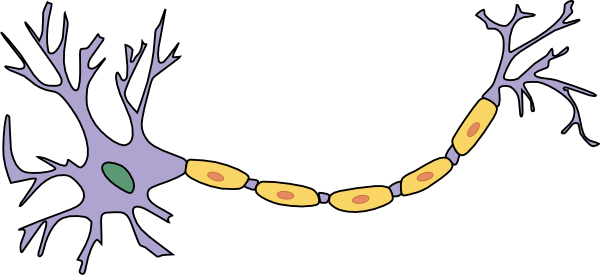The brain is the most complex structure in the human body.
Due to its difficult nature, much of what is known about the brain has
drastically evolved over the years. From Aristotle’s views that the brain was
nothing more than a cooling system to Gall’s views on phrenology, many theories
behind the brain function have been hypothesized. Ramon y Cajal was the first
scientist to speak about neuron theory. He examined the shape and structure of
the neurons or the “butterflies of the soul” for scientific advancement and
even drew them to allow others to visualize their beauty. A true renaissance
man Ramon y Cajal not only pioneered the field of neuroscience but was also an
accomplished artist.
Drawing from his work, BioArtist Suzanne Anker, created the
MRI butterfly which depicts a series of butterflies over lain on MRI scans. It
is beautiful to see the parallelism between nature’s butterfly wings and a part
of humans that controls our every thought and action. It helps to remind me
that genomically humans are not much different than other organism on the
planet.
What is pleasing to see is how art is helping to advance
scientific discovery and vice versa. For example, the “brainbow” which uses fluorescent
probes to help visualize the intricate neurons. It helped map multiple neurons
and is also pretty to look at. Going back to the two cultures lecture, it is
apparent that when art and science come together they both can be driven
forward symbiotically.



Although it may be difficult to see how art assists science as depicted by the class discussion of Two Cultures, it is still nonetheless a fact. In a previous week's discussion, I came across through my research a specific art degree that is given to those that want to convey human organs onto artistic medians. This is a prime example as how art assist the sciences, in this case the health sciences, in helping humanity. Art does not simply ignite the senses, but also can physically benefit individuals through visual education of our future doctors.
ReplyDeleteI wanted to share this quote because it aptly describes the relationship between art and science (neuroscience in particular) from the article "Neuroculture"... "scientific images that render visible invisible phenomena, such as thought and consciousness, arouse artists' interest...art exposes ambivalent possibilities and incites reflection and discussion about our individuality, at times with irony and ambiguity, which science can rarely afford." I see that you mentioned the fMRI Butterfly and Brainbow; and I agree that those two are some influential distinguished examples of art and science working together in a harmonious way, working together to further guide and educate the public.
ReplyDelete